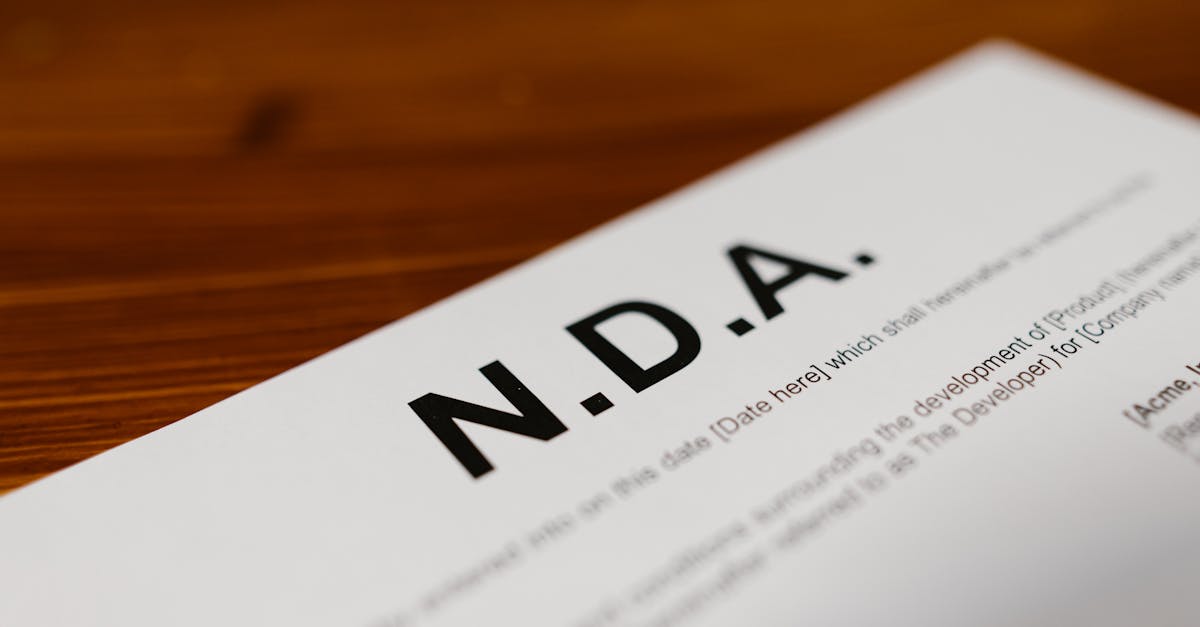
Introduction
AI can dramatically speed up hiring, performance analytics, and benefits administration — and it can also magnify legal, privacy, and compliance headaches overnight. If you manage HR, compliance, or legal work in a growing organization, you’re balancing the promise of automation with regulator scrutiny on bias, automated decisions, and data security. As HR digitization accelerates, practical controls and defensible records are not optional: they’re the difference between rapid adoption and costly enforcement actions. Document automation helps here by producing consistent notices, DSAR packages, and audit-ready evidence with far less manual effort.
What this guide covers: concise, actionable steps to log models and training data, craft consent and transparency templates, automate DSAR intake with SLAs and evidence collection, tighten DPAs and vendor controls, implement model‑training and change‑log workflows, and assemble auditable retention and trail packages. Read on for templates, timelines, and practical checkpoints your HRIS, legal, and operations teams can implement today.
Regulatory risks of deploying AI in HR and the records you must keep
Key regulatory risks
Deploying AI in HR increases exposure to discrimination, lack of transparency, automated-decision rules, unfair profiling, and data security failures. Regulators focus on algorithmic bias, equal-treatment laws, automated decision‑making disclosures (e.g., GDPR automated decisions), workplace safety, and sector-specific rules like health data protections. As you pursue HR digitization or HR digital transformation, these risks escalate because systems such as HRIS or cloud HR solutions centralize sensitive employee data.
Records you must keep
-
Model and training logs: architecture, training datasets, label schemas, versions, hyperparameters, and evaluation metrics.
-
Data provenance: sources, ingestion timestamps, consent or lawful‑basis records, and anonymization steps. (See guidance on performing and storing DPIAs: https://formtify.app/set/ho-so-danh-gia-tac-dong-chuyen-du-lieu-ca-nhan-ra-nuoc-ngoai-cai3o)
-
Decision logs: inputs, outputs, confidence scores, and human-review annotations for any automated action affecting employment.
-
Risk assessments and mitigations: recorded AI risk register, fairness testing, bias remediation steps, and periodic re‑validation results.
-
Contractual records: DSAs/DPAs, vendor attestations, sub‑processor lists, and audit reports.
-
Operational evidence: DSAR responses, audit trails from your HRIS, incident and breach reports, and employee notices.
Keeping structured, searchable records is essential to demonstrate compliance during inspections and to operationalize HR automation safely.
Building consent, transparency, and lawful‑basis templates for employee data use
Start with lawful basis mapping
For each HR use case (recruiting, performance analytics, health and benefits), map the lawful basis: contractual necessity, legal obligation, legitimate interest, or—less commonly—consent. In many HR processes, consent can be problematic because it may not be freely given; prefer contractual or legitimate‑interest bases where appropriate.
Template elements to include
-
Purpose statement: short, plain‑language description of what the data will be used for (e.g., payroll processing, workforce analytics, automated screening).
-
Data categories: list of personal and special categories (health, biometric) collected.
-
Legal basis & retention: legal basis for processing and retention periods by category.
-
Rights & contacts: how employees exercise rights, DSAR process, and privacy contact (link to your privacy policy template: https://formtify.app/set/privacy-policy-agreement-33nsr).
-
Automated decision flag: explicit notice where automated profiling or decisions occur and an opt‑out or human review route if required.
Example language (short)
Processing for performance analytics: We process performance and attendance data to administer compensation and training (legal basis: contractual/legitimate interest). Aggregated analytics may be used to improve workforce planning; individual automated decisions will always include human review.
Store these templates in your HRIS and surface them via employee self-service portals so transparency is consistent across your HR automation landscape.
Automating Data Subject Access Requests (DSARs): templates, SLAs, and evidence collection
Design the automation flow
Integrate DSAR intake with HRIS and identity systems. Use a central ticketing workflow that authenticates requesters, routes to the right data owners, and produces packaged exports. Automation reduces turnaround time and creates the audit trail regulators expect.
Core SLA and timelines
-
Standard target: 30 calendar days from validated request (adjust local statutory periods as needed).
-
Extension: documented 2‑month extension path with notification to the requester if complexity requires it.
-
Internal SLAs: 48 hours to validate identity, 5 business days to collect scoped data, 3 business days to legal review and redaction.
Evidence to collect and store
-
Request intake log with timestamps, identity verification evidence, and scope confirmations.
-
Data export package (CSV/PDF) plus manifest describing sources (HRIS, payroll, LMS, ATS) and applied filters.
-
Redaction worksheet and legal memo for withheld items, if any.
-
Delivery proof: signed receipt or secure link access logs.
Template response points
-
Affirmation of request receipt and scope.
-
Summary of categories of data returned, plus links to privacy notices (see: https://formtify.app/set/privacy-policy-agreement-33nsr).
-
Contact and escalation route if the requester disputes the response.
When health data is involved, incorporate HIPAA or relevant authorization forms for disclosure where applicable: https://formtify.app/set/hipaaa-authorization-form-2fvxa. Automation should flag sensitive categories for mandatory legal review.
Data Processing Agreements and vendor controls for cloud AI providers
Essential DPA clauses
Your DPA with cloud AI providers must cover data controller/processor roles, permitted processing, security measures, sub‑processor controls, breach notification timing, audit rights, and liability limits. Use a standard DPA and customize for AI specifics like model ownership and reuse of de‑identified training data.
Vendor due‑diligence checklist
-
Security posture: ISO 27001, SOC 2, encryption standards in transit and at rest.
-
Data residency and sub‑processors: explicit mapping of data centers and current sub‑processor list with notification windows for changes.
-
Model governance: commitments on not using customer data to improve or retrain shared models unless contractually agreed.
-
Audit & incident handling: rights to audit, access to forensics, and specific breach notification timeframes.
-
Termination and exit: data return and secure deletion procedures with certification.
Start from a template DPA and adapt it for cloud HR solutions and HRIS vendors; a reliable template to review is available here: https://formtify.app/set/data-processing-agreement-cbscw.
Template workflows for model training data, notice updates, and change logs
Model training data workflow (template)
-
Step 1 — Define purpose & scope: document why the model exists (hiring, churn prediction, benefits eligibility).
-
Step 2 — Source & classify data: list data fields, sensitivity level, lawful basis, and retention rules.
-
Step 3 — Consent & access reviews: check consents and legitimate‑interest tests; record authorizations.
-
Step 4 — Preprocessing & anonymization: apply minimization and pseudonymization as standard.
-
Step 5 — Training, testing & bias checks: maintain versioned datasets and fairness test results.
-
Step 6 — Deployment & monitoring: publish model version, performance metrics, and rollback triggers.
Notice updates and communication
When model scope or data usage changes, update employee notices and privacy statements promptly. Use a short change note on your employee portal and send targeted emails for material changes. Link to your privacy policy template to ensure consistency: https://formtify.app/set/privacy-policy-agreement-33nsr.
Change logs & versioning
-
Maintain a tamper-evident change log for datasets, model versions, and notice texts.
-
Record who authorized changes, summary of changes, and effective date.
-
Keep a retrain history with dataset snapshots so you can reproduce model behavior for audits.
These workflows support both HR digitization goals (paperless onboarding processes, employee self‑service portals) and compliance for workforce analytics initiatives.
Audit trails, retention rules, and practical steps to prove compliance to regulators
Design auditable trails
Ensure your HRIS and related systems log: who accessed what data, when, from where, and for what purpose. Logs must be immutable for a regulatory window and include exportable evidence for inspections.
Retention rule framework
-
Legal & business mapping: map retention periods by data category (payroll, recruitment, health) against local employment law.
-
Automated enforcement: implement rules in your HRIS to auto‑expire data and archive or delete according to policy.
-
Special categories: treat sensitive health and biometric data with shorter retention and extra controls.
Proving compliance to regulators — practical checklist
-
Produce DPIAs, technical risk assessments, and the PIA documentation: https://formtify.app/set/ho-so-danh-gia-tac-dong-chuyen-du-lieu-ca-nhan-ra-nuoc-ngoai-cai3o.
-
Export audit logs showing access, modification, and DSAR processing timestamps.
-
Provide DPAs and vendor attestations (example DPA template: https://formtify.app/set/data-processing-agreement-cbscw).
-
Show versioned notices and change logs with publication timestamps.
-
Include training records for HR staff on fair‑AI use and incident response logs.
Keep evidence packages ready: a zipped set of logs, policy documents, signed DPAs, and redacted DSAR deliverables. That preparation turns HR digitization from a compliance risk into an auditable, defensible asset.
Summary
In summary, this checklist pulls together the practical controls you need to deploy AI in HR responsibly: document your models and training data, map lawful bases and employee notices, automate DSAR intake and evidence collection, tighten DPAs with cloud AI vendors, and keep auditable change logs and retention rules. Using consistent templates and automated workflows turns compliance from a manual burden into a repeatable, defensible process, so your HR and legal teams can scale without losing control. Document automation speeds production of notices, DSAR packages, and audit‑ready evidence while reducing human error — an essential capability as HR digitization advances. For templates and starter packs, review the resources at https://formtify.app
FAQs
What is HR digitization?
HR digitization is the move from paper and ad hoc processes to digital systems that manage hiring, payroll, learning, and employee records. It typically involves HRIS, ATS, payroll platforms, and automation to streamline workflows and make data easier to analyze and protect. The result should be faster processes and clearer audit trails for compliance.
How does HR digitization benefit companies?
Digitizing HR reduces manual work, shortens hiring and onboarding times, and improves data accuracy across processes like payroll and performance management. It also enables better analytics for workforce planning and makes it easier to meet regulatory obligations when paired with proper controls and documentation.
What tools are used for HR digitization?
Common tools include HRIS platforms, applicant tracking systems (ATS), learning management systems (LMS), payroll solutions, and document automation or workflow engines. Increasingly, organizations add AI‑powered analytics and DSAR automation to help with searches, packaging responses, and maintaining audit logs.
How do I start digitizing HR processes?
Begin by mapping your core HR processes and prioritizing those with the biggest time or compliance burden, then choose an HRIS or modular tools that integrate with your systems. Build templates for notices, DSARs, and DPAs, pilot automation with a small use case, and involve legal and compliance early to ensure privacy and model governance are baked in.
What are common challenges in HR digitization?
Typical challenges include ensuring data privacy and lawful bases for processing, managing vendor and model risk, preventing algorithmic bias, and maintaining clear retention and audit trails. Change management and cross‑team coordination are also critical—technology alone won’t solve governance gaps without documented workflows and training.





